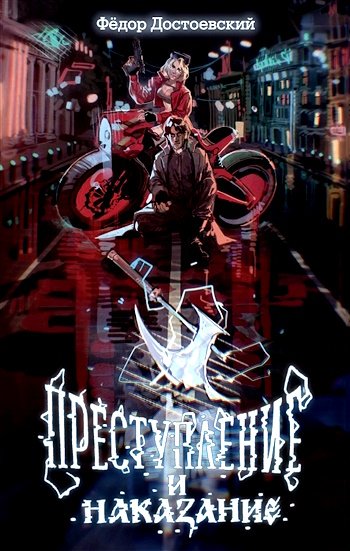the Lego parts, but Steve settled right on the hard-drive option just the way we had modeled it,” Fadell recalled.
He was rather stunned by the process. “I was used to being at Philips, where decisions like this would take meeting after meeting, with a lot of PowerPoint presentations and going back for more study.”
Next it was Phil Schiller’s turn. “Can I bring out my idea now?” he asked. He left the room and returned with a handful of iPod models, all of which had the same device on the front: the soon-to-be-famous trackwheel. “I had been thinking of how you go through a playlist,” he recalled. “You can’t press a button hundreds of times. Wouldn’t it be great if you could have a wheel?” By turning the wheel with your thumb, you could scroll through songs. The longer you kept turning, the faster the scrolling got, so you could zip through hundreds easily. Jobs shouted, “That’s it!” He got Fadell and the engineers working on it.
Once the project was launched, Jobs immersed himself in it daily. His main demand was “Simplify!” He would go over each screen of the user interface and apply a rigid test: If he wanted a song or a function, he should be able to get there in three clicks. And the click should be intuitive. If he couldn’t figure out how to navigate to something, or if it took more than three clicks, he would be brutal. “There would be times when we’d rack our brains on a user interface problem, and think we’d considered every option, and he would go,
‘Did you think of this?’” said Fadell. “And then we’d all go, ‘Holy shit.’ He’d redefine the problem or approach, and our little problem would go away.”
Every night Jobs would be on the phone with ideas. Fadell and the others would call each other up, discuss Jobs’s latest suggestion, and conspire on how to nudge him to where they wanted him to go, which worked about half the time. “We would have this
Steve Jobs by Walter Isaacson 510
swirling thing of Steve’s latest idea, and we would all try to stay ahead of it,” said Fadell. “Every day there was something like that, whether it was a switch here, or a button color, or a pricing strategy issue. With his style, you needed to work with your peers, watch each other’s back.”
One key insight Jobs had was that as many functions as possible should be performed using iTunes on your computer rather than on the iPod. As he later recalled:
In order to make the iPod really easy to use—and this took a lot of arguing on my part—we needed to limit what the device itself would do. Instead we put that functionality in iTunes on the computer. For example, we made it so you couldn’t make playlists using the device. You made playlists on iTunes, and then you synced with the device. That was controversial. But what made the Rio and other devices so brain-dead was that they were complicated. They had to do things like make playlists, because they weren’t integrated with the jukebox software on your computer. So by owning the iTunes software and the iPod device, that allowed us to make the computer and the device work together, and it allowed us to put the complexity in the right place.
The most Zen of all simplicities was Jobs’s decree, which astonished his colleagues, that the iPod would not have an on-off switch. It became true of most Apple devices. There was no need for one. Apple’s devices would go dormant if they were not being used, and they would wake up when you touched any key. But there was no need for a switch that would go “Click—you’re off. Good-bye.”
Suddenly everything had fallen into place: a drive that would hold a thousand songs; an interface and scroll wheel that would let you navigate a thousand
Steve Jobs by Walter Isaacson 511
songs; a FireWire connection that could sync a thousand songs in under ten minutes; and a battery that would last through a thousand songs. “We suddenly were looking at one another and saying, ‘This is going to be so cool,’” Jobs recalled. “We knew how cool it was, because we knew how badly we each wanted one personally. And the concept became so beautifully simple: a thousand songs in your pocket.” One of the copywriters suggested they call it a “Pod.” Jobs was the one who, borrowing from the iMac and iTunes names, modified that to iPod.
The Whiteness of the Whale
Jony Ive had been playing with the foam model of the iPod and trying to conceive what the finished product should look like when an idea occurred to him on a morning drive from his San Francisco home to Cupertino. Its face should be pure white, he told his colleague in the car, and it should connect seamlessly to a polished stainless steel back. “Most small consumer products have this disposable feel to them,”
said Ive. “There is no cultural gravity to them. The thing I’m proudest of about the iPod is that there is something about it that makes it feel significant, not disposable.”
The white would be not just white, but pure white.
“Not only the device, but the headphones and the wires and even the power block,” he recalled. “Pure white.”
Others kept arguing that the headphones, of course, should be black, like all headphones. “But Steve got it immediately, and embraced white,” said Ive. “There would be a purity to it.” The sinuous flow of the white earbud wires helped make the iPod an icon. As Ive described it:
There was something very significant and nondisposable about it, yet there was also something very quiet and very restrained. It wasn’t wagging its tail in your face. It was restrained, but it was also crazy, with
Steve Jobs by Walter Isaacson 512
those flowing headphones. That’s why I like white.
White isn’t just a neutral color. It is so pure and quiet.
Bold and conspicuous and yet so inconspicuous as well.
Lee Clow’s advertising team at TBWAwanted to celebrate the iconic nature of the iPod and its whiteness rather than create more traditional product-introduction ads that showed off the device’s features. James Vincent, a lanky young Brit who had played in a band and worked as a DJ, had recently joined the agency, and he was a natural to help focus Apple’s advertising on hip millennial-generation music lovers rather than rebel baby boomers. With the help of the art director Susan Alinsangan, they created a series of billboards and posters for the iPod, and they spread the options on Jobs’s conference room table for his inspection.
At the far right end they placed the most traditional options, which featured straightforward photos of the iPod on a white background. At the far left end they placed the most graphic and iconic treatments, which showed just a silhouette of someone dancing while listening to an iPod, its white earphone wires waving with the music. “It understood your emotional and intensely personal relationship with the music,” Vincent said. He suggested to Duncan Milner, the creative director, that they all stand firmly at the far left end, to see if they could get Jobs to gravitate there. When he walked in, he went immediately to the right, looking at the stark product pictures. “This looks great,” he said.
“Let’s talk about these.” Vincent, Milner, and Clow did not budge from the other end. Finally, Jobs looked up, glanced at the iconic treatments, and said, “Oh, I guess you like this stuff.” He shook his head. “It doesn’t show the product. It doesn’t say what it is.” Vincent proposed that they use the iconic images but add the tagline,
“1,000 songs in your pocket.” That would say it all. Jobs
Steve Jobs by Walter Isaacson 513
glanced back toward the right end of the table, then finally agreed. Not surprisingly he was soon claiming that it was his idea to push for the more iconic ads.
“There were some skeptics around who asked, ‘How’s this going to actually sell an iPod?’” Jobs recalled.
“That’s when it came in handy to be the CEO, so I could push the idea through.”
Jobs realized that there was yet another advantage to the fact that Apple had an integrated system of computer, software, and device. It meant that sales of the iPod would drive sales of the iMac. That, in turn, meant that he could take money that Apple was spending on iMac advertising and shift it to spending on iPod ads—getting a double bang for the buck. A triple bang, actually, because the ads would lend luster and youthfulness to the whole Apple brand. He recalled: I had this crazy idea that we could sell just as many Macs by advertising the iPod. In addition, the iPod would position Apple as evoking innovation and youth. So I moved $75 million of advertising money to the iPod, even though the category didn’t justify one hundredth of that. That meant that we completely dominated the market for music players. We outspent everybody by a factor of about a hundred.
The television ads showed the iconic silhouettes dancing to songs picked by Jobs, Clow, and Vincent.
“Finding the music became our main fun at our weekly marketing meetings,” said Clow. “We’d play some edgy cut, Steve would say, ‘I hate that,’ and James would have to talk him into it.” The ads helped popularize many new bands, most notably the Black Eyed Peas; the ad with “Hey Mama” is the classic of the silhouettes genre. When a new ad was about to go into production, Jobs would often have second thoughts, call up Vincent, and insist that he cancel it. “It sounds a bit poppy” or “It sounds a bit trivial,” he would say. “Let’s
Steve Jobs by Walter Isaacson 514
call it off.” James would get flustered and try to talk him around. “Hold on, it’s going to be great,” he would argue. Invariably Jobs would relent, the ad would be made, and he would love it.
Jobs unveiled the iPod on October 23, 2001, at one of his signature product launch events. “Hint: It’s not a Mac,” the invitation teased. When it came time to reveal the product, after he described its technical capabilities, Jobs did not do his usual trick of walking over to a table and pulling off a velvet cloth. Instead he said, “I happen to have one right here in my pocket.” He reached into his jeans and pulled out the gleaming white device. “This amazing little device holds a thousand songs, and it goes right in my pocket.” He slipped it back in and ambled offstage to applause.
Initially there was some skepticism among tech geeks, especially about the $399 price. In the blogosphere, the joke was that iPod stood for “idiots price our devices.” However, consumers soon made it a hit. More than that, the iPod became the essence of everything Apple was destined to be: poetry connected to engineering, arts and creativity intersecting with technology, design that’s bold and simple. It had an ease of use that came from being an integrated end-to-end system, from computer to FireWire to device to software to content management. When you took an iPod out of the box, it was so beautiful that it seemed to glow, and it made all other music players look as if they had been designed and manufactured in Uzbekistan.

























